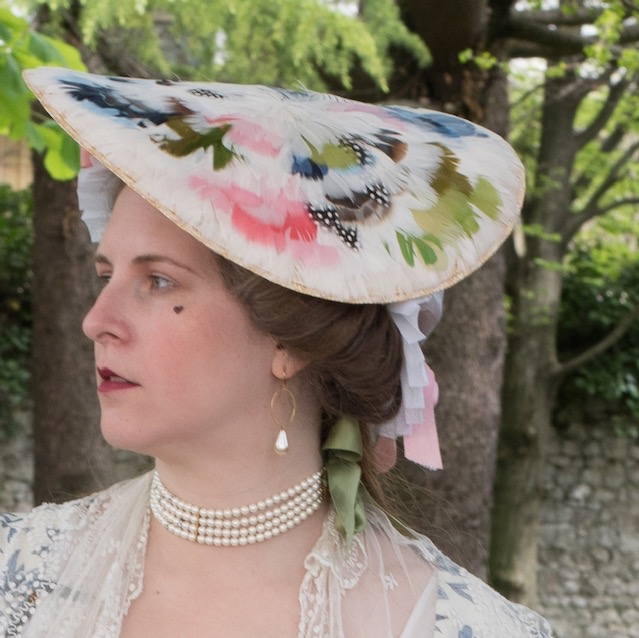
Laurie Tavan modeling this hat and day cap (from my 18th C Day Cap pattern).
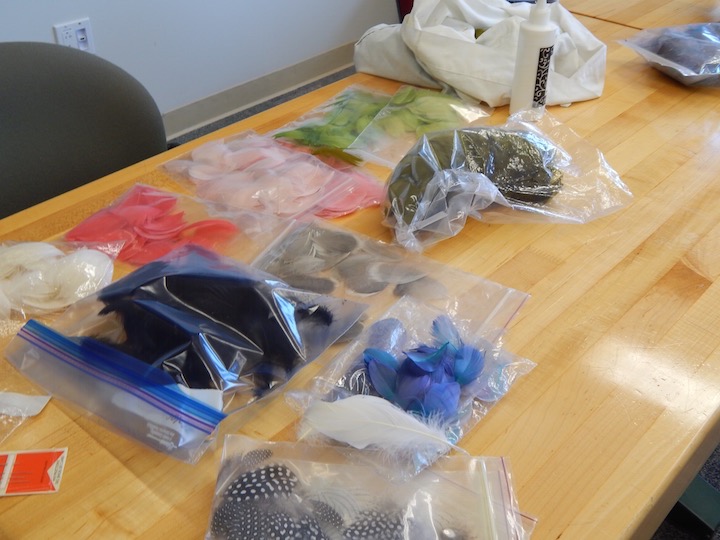
The first steps are to round up and sometimes dye shades of Goose feathers. Then they all need to be cut to 2″. That is important so everything lines up. The vast majority of the feathers in this hat are Goose shoulder feathers there are some other species for variety just like the extant hat.
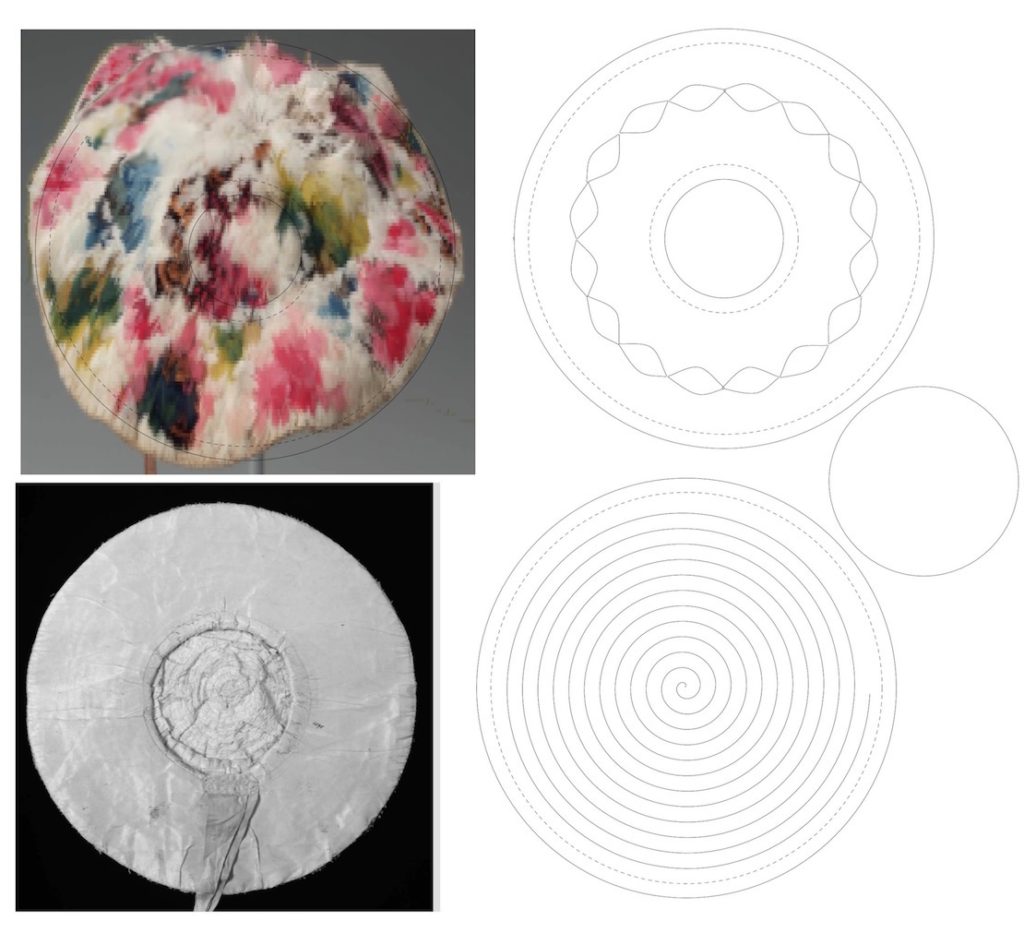
I sized the museum photo to the size noted and drafted a pattern for the top and the lining on the computer.
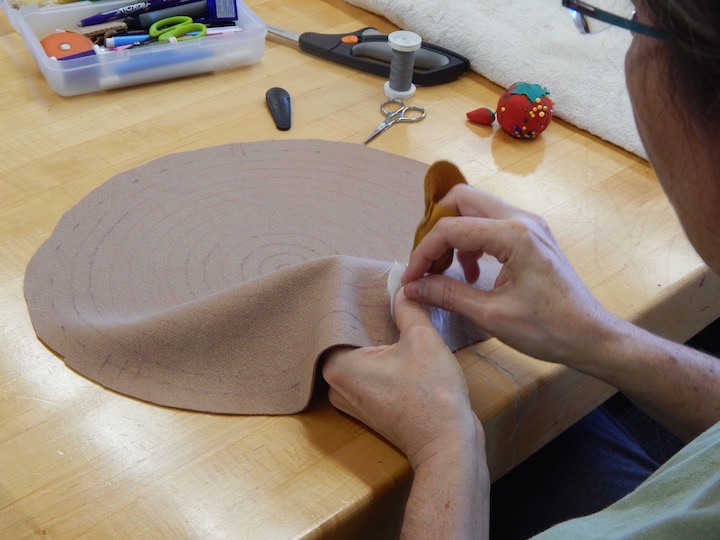
Feathers for garments are usually added to felt. We are using a piece of felted wool fabric (Wool flannel, just a little heaver than suiting). Check the Muff how-to for better pictures of her stitching. She takes three stitches per feather.

Steph sewing on the first row which are all natural white feathers. You can see she has added the spiral to follow. She starts with the cut edge of the stem of the feather on the second line in.

How the wool felt looked with six rows of feathers added. She keep adding feathers until she got a very small hole in the center and then I had to glue a few feathers to fill the spot.
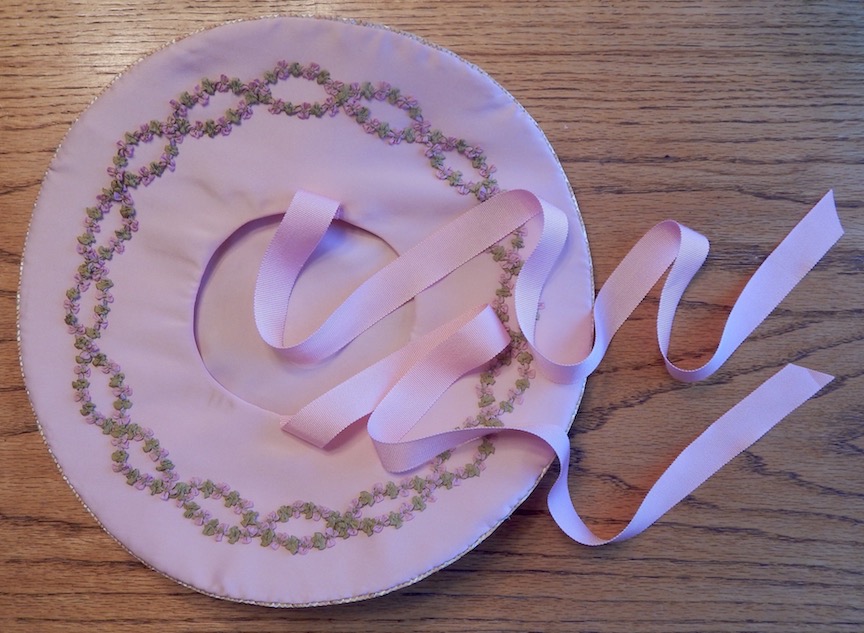
I made the lining.
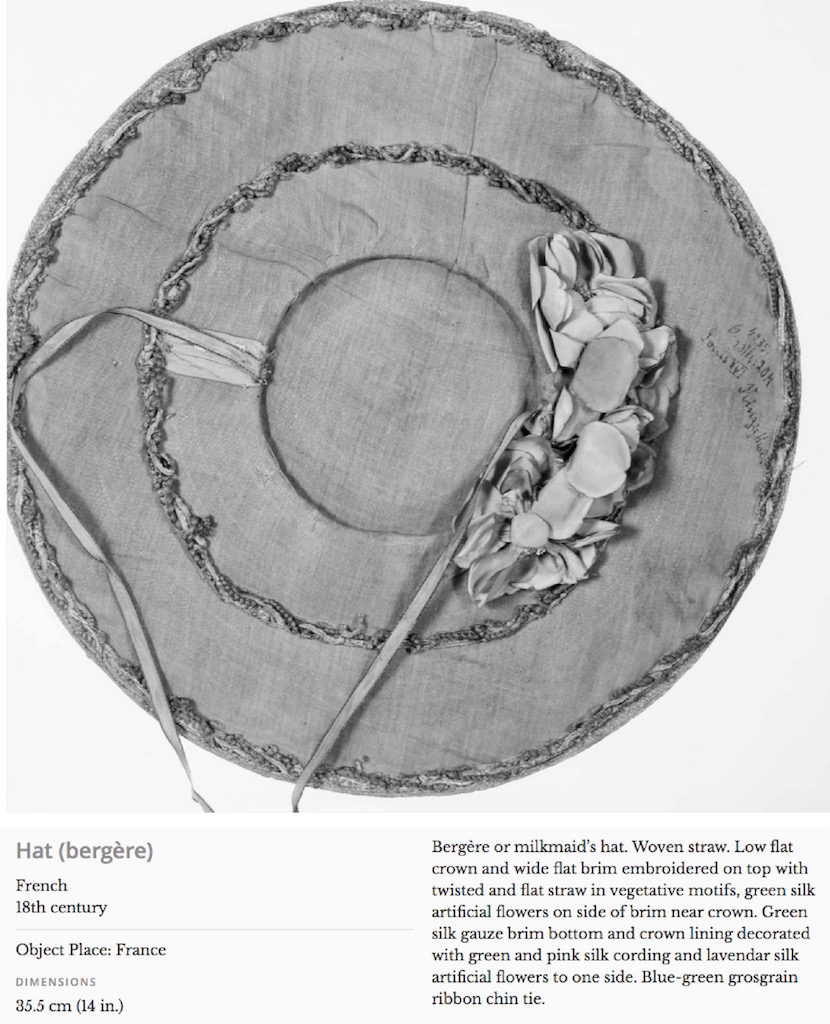
I used this photo as a model for how the decoration on the lining should look.
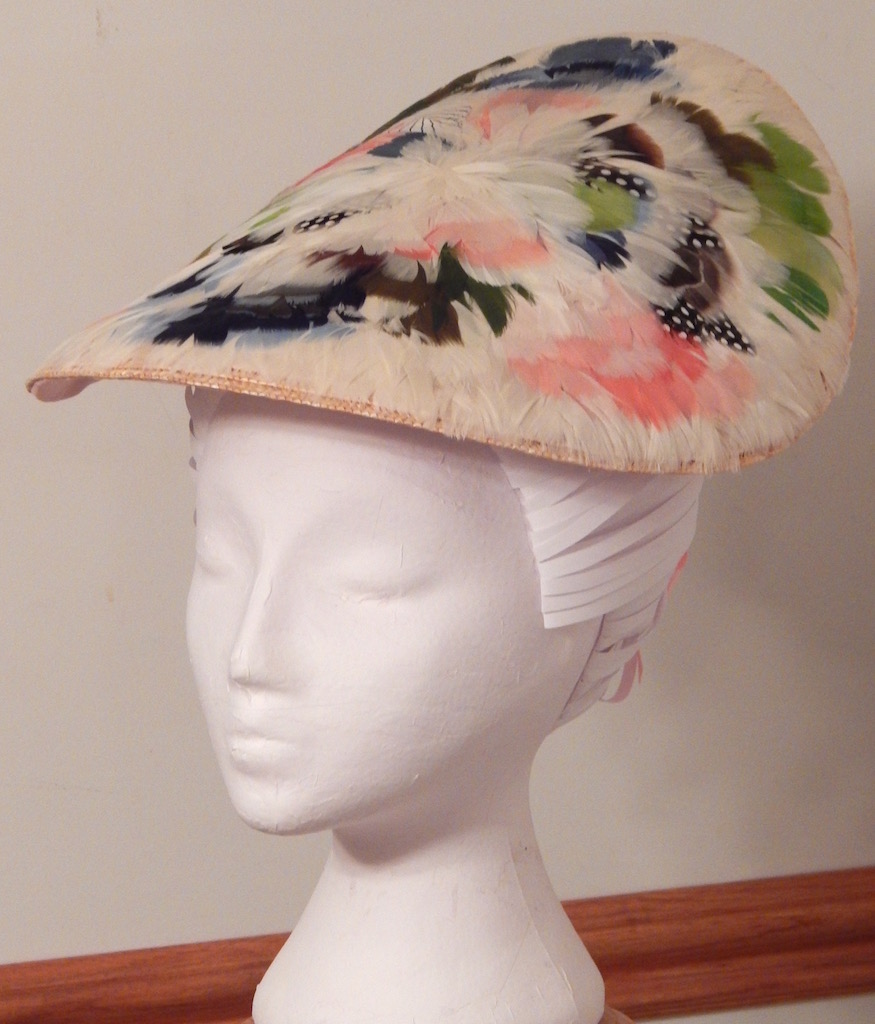
Finished hat from the front.
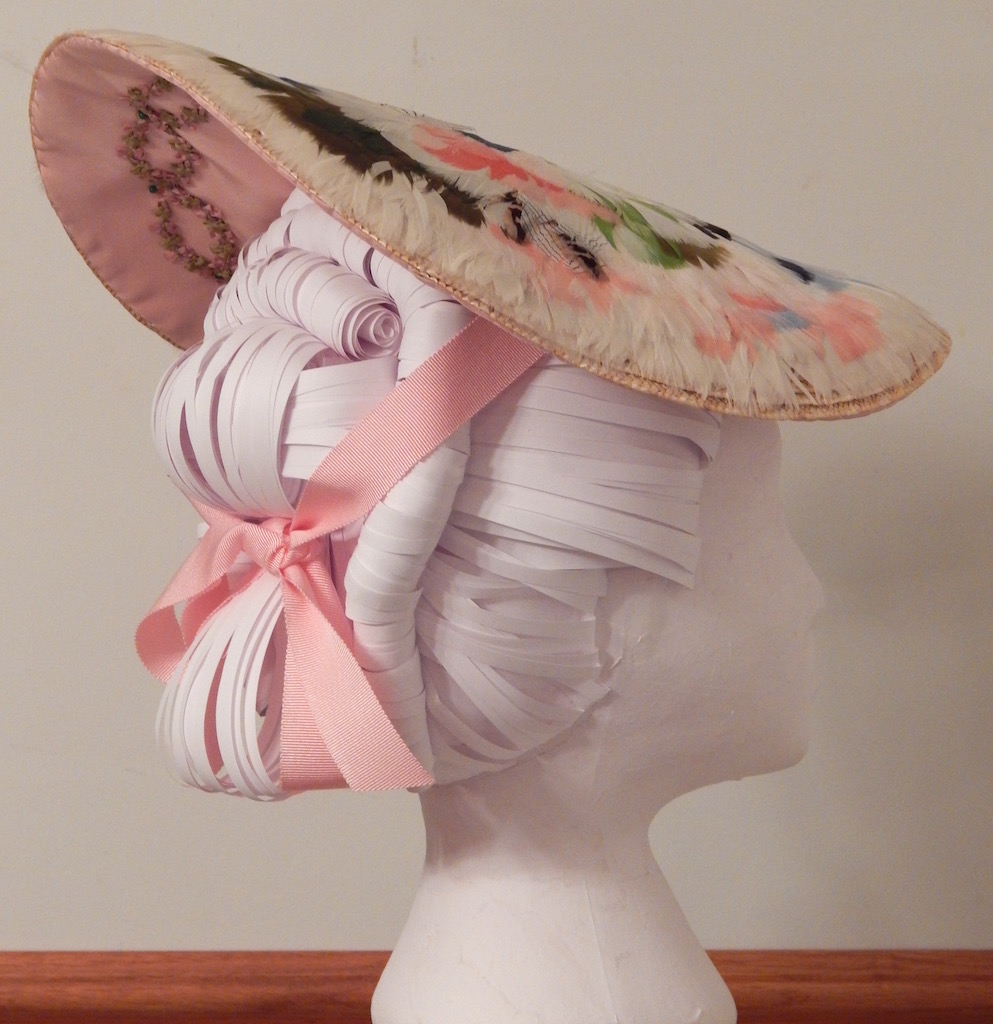
Finished hat from the side.
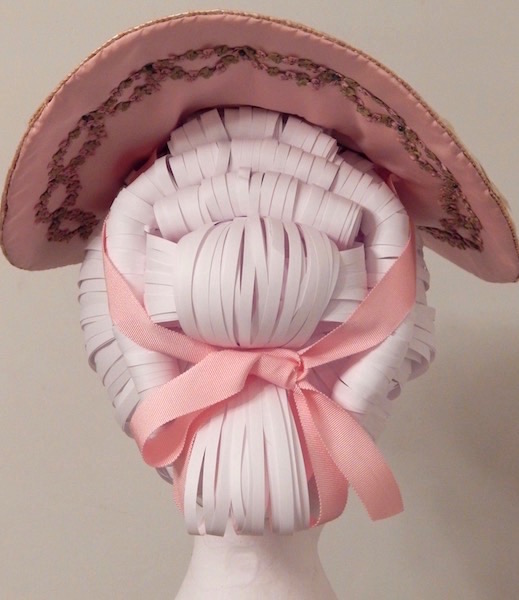
Finished hat from the back.
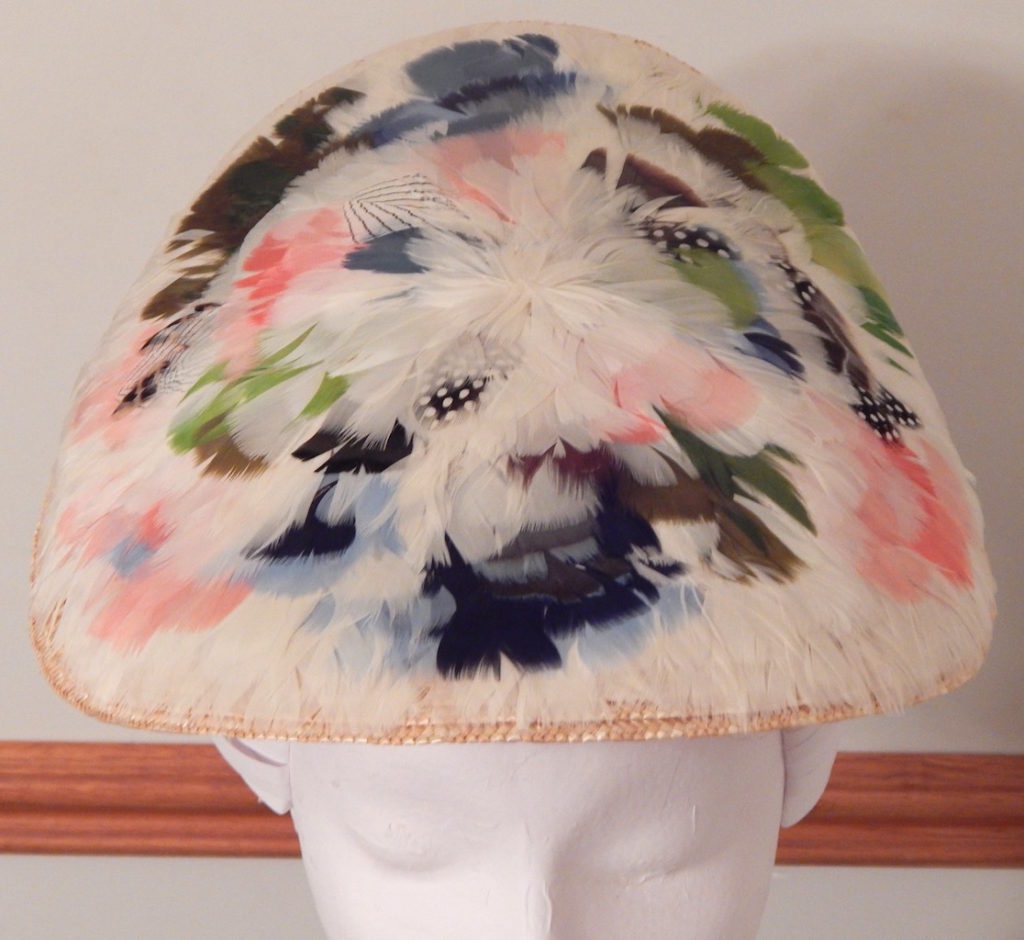
Close up of the feathers.
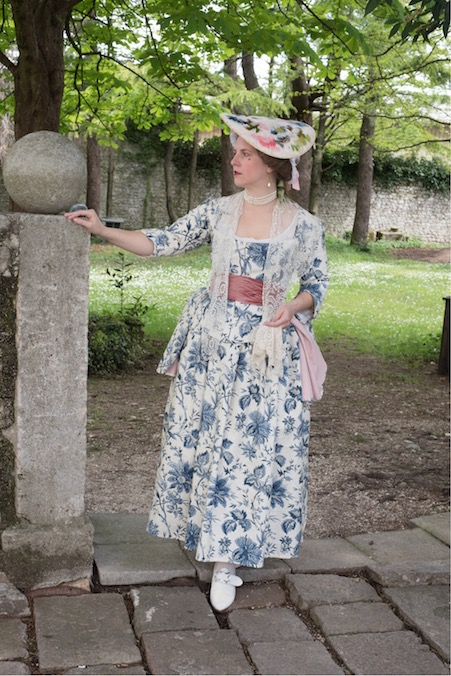
Another picture of Laurie Tavan modeling the hat and a costume she made herself.
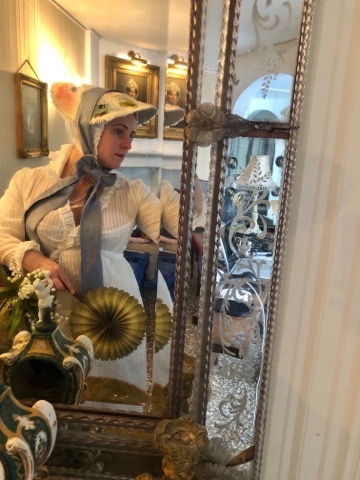
Another picture of Laurie Tavan modeling the sister hat to this one and a costume she made herself. I made a top on the sewing machine while Steph was making the one by hand. This one turned out OK but one thing I learned was that you can not machine sew thru the feathers twice. I was following the spirals as well which caused me to sew thru all the rows twice.
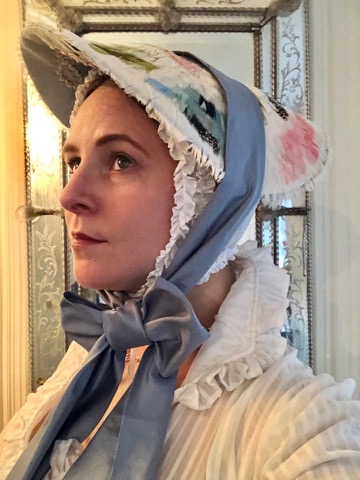
Another picture of Laurie Tavan modeling the hat and a costume she made herself and a day cap from my Late 18th Early 19th C day cap pattern. This is the machine sewn feather top, Laurie made the lining for this one out of blue fabric. She is wearing it in a Regency Style.
On to the Feather Muff project.